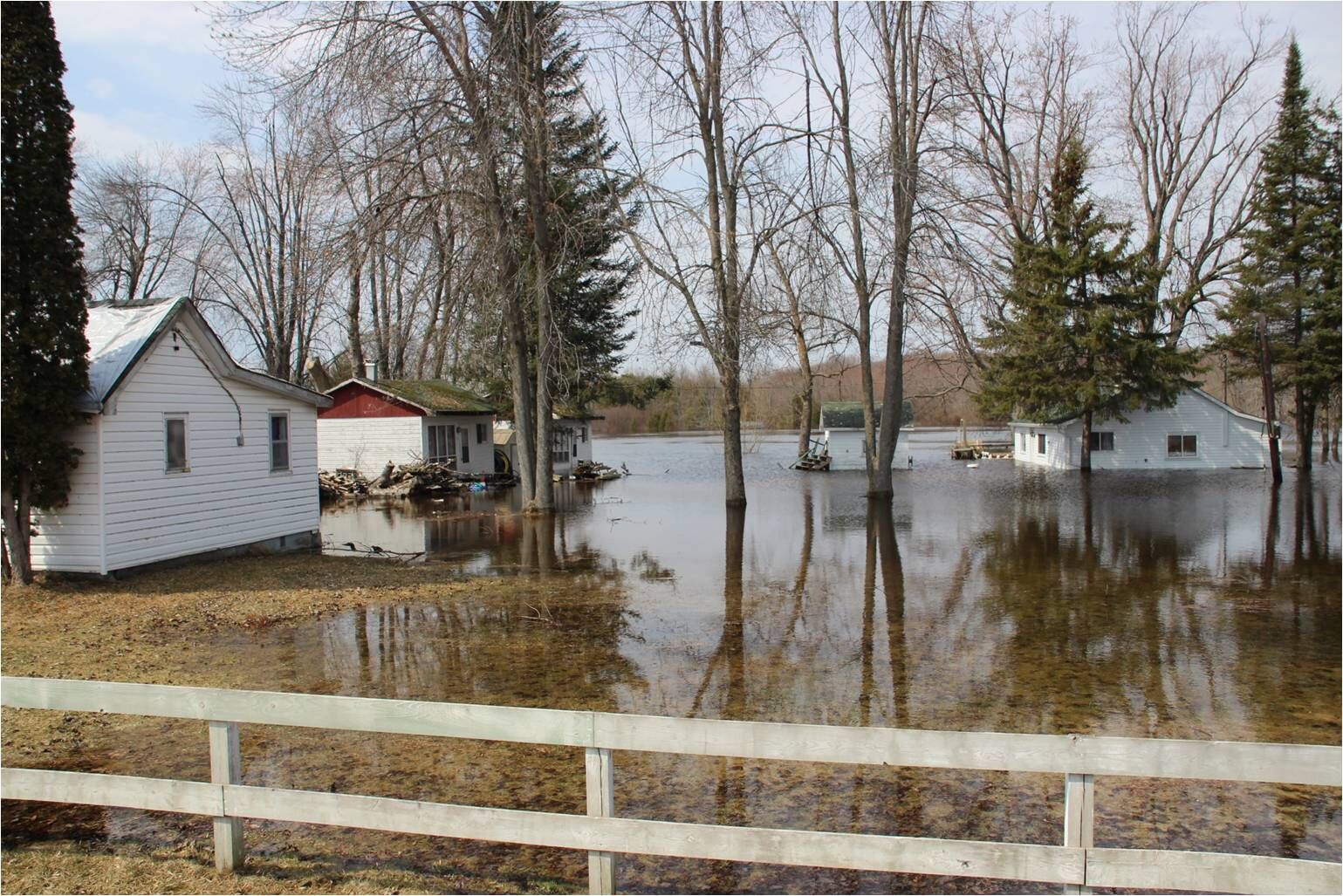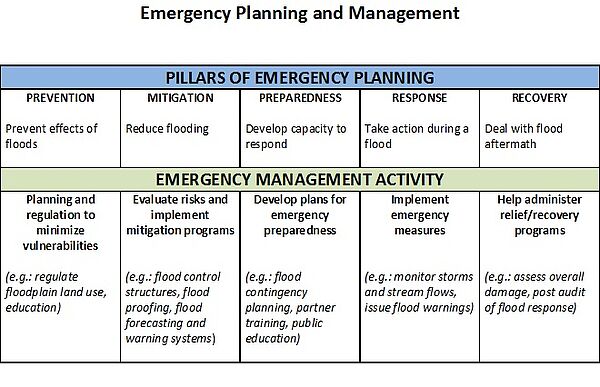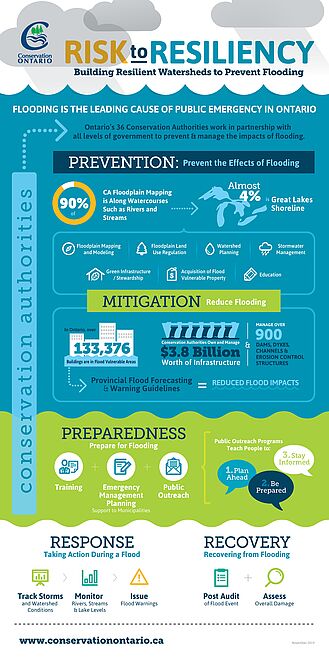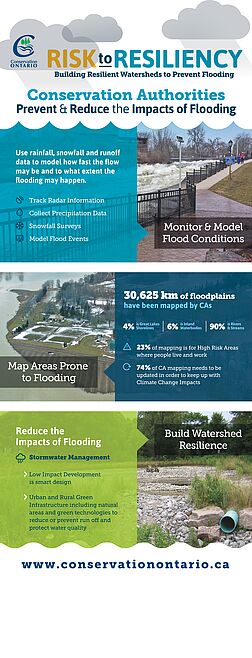Flooding and Erosion
Flooding is the leading cause of public emergency in Ontario. Conservation Authorities are the first line of defence in preventing and reducing the impacts of flooding.
Flooding is a natural and important part of a healthy river and lakeshore system, however, the impacts of flooding can be severe. Loss of life, property devastation, long-term social, emotional and economic disruption and the staggering clean up costs in the aftermath of a flood emphasize the need for effective flood and erosion management on a watershed basis.
The local watershed expertise of Conservation Authorities helps Ontario to reduce the risk of flooding and erosion. They provide flood risk information to municipalities, developers and others in order to promote proper land-use planning. They also regulate new and existing development in order to protect lives and property and reduce the cost of flooding to all levels of government.
Good planning now restricts development in flood-prone areas today, however, there are older developments and infrastructure established prior to regulations that are still at-risk from flooding. Conservation Authorities help these property owners to flood-proof their properties as much as possible.
Roles and Responsibilities of Conservation Authorities for Management of Flooding and Erosion
Managing the risk associated with flooding and erosion is one of the primary roles of Conservation Authorities under the Conservation Authorities Act.
Conservation Authorities monitor and predict flood flows and water levels year-round, operate flood control structures and relay flood messages to local municipalities and emergency management officials. This information is used to keep people out of harm’s way in advance of potential flood and erosion events.
Conservation Authorities rely on an integrated approach to reducing the risk of flooding which includes the five pillars of Emergency Planning and Management.
Flood Management Activities of Conservation Authorities
- Undertake floodplain mapping, modelling, and monitoring streamflow, rainfall and snowpacks
- Regulate development in flood prone areas in cooperation with municipalities and the Province
- Provide planning support and advice to municipalities to minimize flood impacts and issue warnings
- If able to, acquire important floodplain lands and flood vulnerable structures
- Operate over 900 dams, dykes, channels and erosion control structures
Conservation Authorities bring added protection and benefits with their foundational watershed management activities which include: watershed-scale monitoring, data collection management and modelling, watershed-scale studies, plans, assessments and strategies, and watershed-wide actions including stewardship, communications, and outreach and education activities.
Resource:



